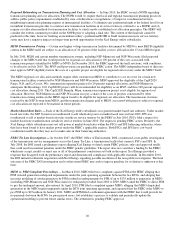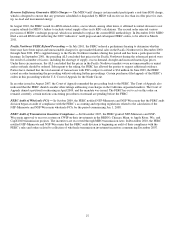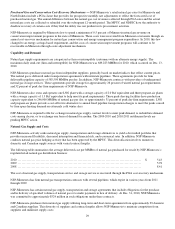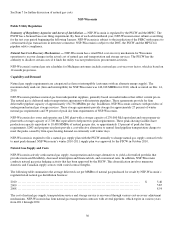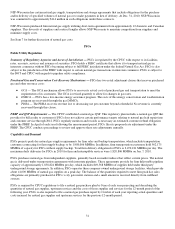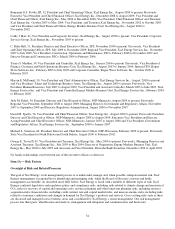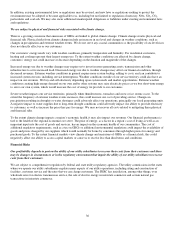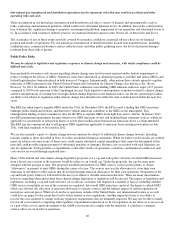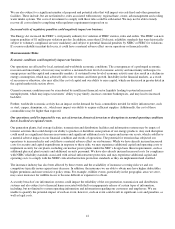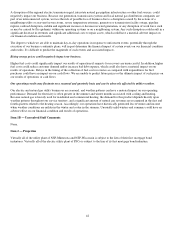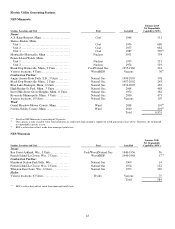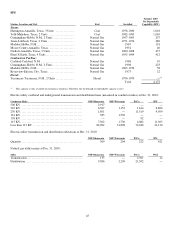Xcel Energy 2010 Annual Report Download - page 45
Download and view the complete annual report
Please find page 45 of the 2010 Xcel Energy annual report below. You can navigate through the pages in the report by either clicking on the pages listed below, or by using the keyword search tool below to find specific information within the annual report.35
Xcel Energy management identifies and analyzes risks to determine materiality and other attributes such as timing, probability
and controllability. Management broadly considers our business, the utility industry, the domestic and global economy and the
environment to identify risks. Identification and analysis occurs formally through a key risk assessment process conducted by
senior management, the securities disclosure process, the hazard risk management process and internal auditing and compliance
with financial and operational controls. Management also identifies and analyzes risk through its business planning process and
development of goals and key performance indicators, which include risk identification to determine barriers to implementing
Xcel Energy’s strategy. At the same time, the business planning process identifies areas in which there is a potential for a business
area to take inappropriate risk to meet goals and determines how to prevent inappropriate risk-taking.
Xcel Energy management seeks to mitigate the risks inherent in the implementation of Xcel Energy’s strategy. The process for
risk mitigation includes adherence to our code of conduct and other compliance policies, operation of formal risk management
structures and groups, and overall business management. At a threshold level, Xcel Energy has developed a robust compliance
program and promotes a culture of compliance, which mitigates risk. Building on this culture of compliance, Xcel Energy
manages and mitigates risks through operation of formal risk management structures and groups, including management councils,
risk committees and the services of corporate areas such as internal audit, the corporate controller and legal services. While Xcel
Energy has developed a number of formal structures for risk management, many material risks affect the business as a whole and
are managed across business areas.
Xcel Energy management also communicates with the Board and key stakeholders regarding risk. Xcel Energy provides
information to the Board in presentations and communications over the course of the year. Senior management presents an
assessment of key risks to the Board annually. The presentation of the key risks and the discussion provides the Board with
information on the risks management believes are material, including the earnings impact, timing, likelihood and controllability.
Based on this presentation, the Board reviews risks at an enterprise level and confirms risk management and mitigation are
included in Xcel Energy’s strategy. The guidelines on corporate governance and committee charters define the scope of review
and inquiry for the Board and committees. The standing committees also oversee risk management as part of their charters. Each
committee has responsibility for overseeing aspects of risk and Xcel Energy’s management and mitigation of the risk. The Board
has overall responsibility for risk oversight. As described above, the Board reviews the key risk assessment process presented by
senior management. This key risk assessment analyzes the most likely areas of future risk to Xcel Energy. The Board also reviews
the performance and annual goals of each business area. This review, when combined with the oversight of specific risks by the
committees, allows the Board to confirm risk is considered in the development of goals and that risk has been adequately
considered and mitigated in the execution of corporate strategy. The presentation of the assessment of key risks also provides the
basis for the discussion of risk in our public filings and securities disclosures.
Risks Associated with Our Business
Environmental Risks
We are subject to environmental laws and regulations, with which compliance could be difficult and costly.
We are subject to environmental laws and regulations that affect many aspects of our past, present and future operations,
including air emissions, water quality, wastewater discharges and the generation, transport and disposal of solid wastes and
hazardous substances. These laws and regulations require us to obtain and comply with a wide variety of environmental
registrations, licenses, permits, inspections and other approvals. Environmental laws and regulations can also require us to restrict
or limit the output of certain facilities or the use of certain fuels, to install pollution control equipment at our facilities, clean up
spills and correct environmental hazards and other contamination. Both public officials and private individuals may seek to
enforce the applicable environmental laws and regulations against us. We may be required to pay all or a portion of the cost to
remediate (i.e. clean-up) sites where our past activities, or the activities of certain other parties, caused environmental
contamination. At Dec. 31, 2010, these sites included:
● Sites of former MGPs operated by our subsidiaries, predecessors, or other entities; and
● Third party sites, such as landfills, for which we are alleged to be a potentially responsible party that sent hazardous
materials and wastes.
We are also subject to mandates to provide customers with clean energy, renewable energy and energy conservation offerings.
These mandates are designed in part to mitigate the potential environmental impacts of utility operations. Failure to meet the
requirements of these mandates may result in fines or penalties, which could have a material adverse effect on our results of
operations. If our regulators do not allow us to recover all or a part of the cost of capital investment or the O&M costs incurred to
comply with the mandates, it could have a material adverse effect on our results of operations.



